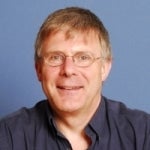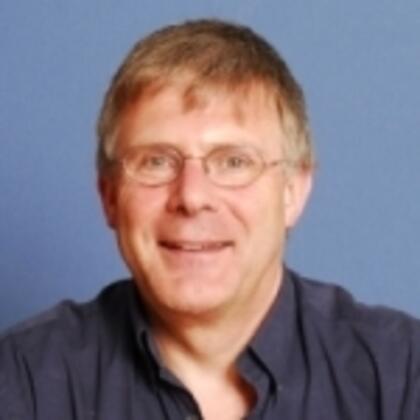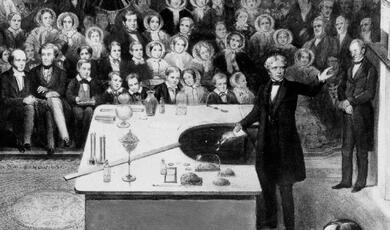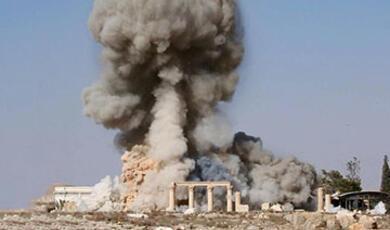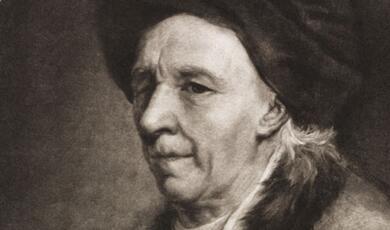25 November 2010
The Setting up of the Royal Society
Professor Michael Hunter
In this talk I intend to reflect on various facets of the origins and early evolution of the Royal Society, but I want to start by going back to some of the ground that Allan Chapman has already covered, and to the role of the Oxford group as the Society’s key precursor. John Wilkins rightly takes the credit for forming this group – it was thus apparently due to an approach by Wilkins that Robert Boyle left his estates at Stalbridge in Dorset in order to join it -- and Wilkins also presided over it until he moved to Cambridge to become Master of Trinity in 1659. But what I want to stress about the Oxford club is the degree to which it acquired a formal structure, as reflected in the rules drawn up for it in 1651, of which I show a transcript here. These foreshadow the Royal Society in various ways: they provided for regular meetings, admittance by majority vote, a ‘Catalogue’ of members and the levy of subscriptions to pay for publicly exhibited experiments. Equally revealing are the plans for systematically appraising the existing scientific literature with a view to trying experiments from it, of which we hear from a letter from Seth Ward to Sir Justinian Isham in 1652. This organisational ambitiousness looks forward to the Royal Society in a way that had not been true of earlier groups like the one that met in London in 1645, and it gives the Oxford group a real significance from this point of view.
Also significant is the actual research programme of the Oxford group, about which we have already heard from Alan, and here I hope you will forgive me if I single out the work of Boyle during the time that he was associated with the group in the late 1650s. Arguably, this was the most intellectually productive period of Boyle’s entire life, when he wrote many of his most important books, although none was published till after 1660. Here I am thinking of such works as Certain Physiological Essays of 1661 and Boyle’s histories of colours and of cold, in which Boyle laid down the programme of testing the ideas of the new, mechanical philosophy by painstaking experiment which in many ways provided the inspiration of the scientific work associated with the Royal Society after 1660. There were also his more programmatic statements, against Aristotelianism in The Origin of Forms and Qualities (1665), and of the potential of science in The Usefulness of Natural Philosophy (1663). All these works were substantially written by Boyle in Oxford in the late 1650s, and his work there reached a climax with the investigations that he carried out in the last two years of the Interregnum with the air-pump designed for him by Robert Hooke, published in the summer of 1660 as New Experiments Physico-Mechanical, Touching the Spring of the Air and its Effects. Intellectually, all this provided the template for the Royal Society as much as the club’s 1651 rules did in organisational terms.
On the other hand, when it was founded in 1660, the Royal Society was different and more grandiose in its ambitions than the Oxford experimental philosophy club. Quite apart from anything else, its early membership included various groups of people other than those who had previously been members of the Oxford group. Even within the initial group of twelve who met after Christopher Wren’s astronomy lecture at Gresham College on 28 November 1660 and resolved to set up ‘a Colledge for the promoting of Physico-Mathematicall Experimentall Learning’, men such as Boyle, Wilkins, Petty and Wren, who had been at Oxford, were balanced by others who had not. Of these, the most important were prominent members of the royal court, recently returned from exile abroad, including Lord Brouncker, Sir Robert Moray, Sir Paul Neile, and Alexander Bruce, later Earl of Kincardine. There were also London physicians and intellectuals such as William Ball, Abraham Hill and Lawrence Rooke. As the membership grew from this nucleus, each of these components was reinforced, and the result was that the society took on a somewhat different character from the Oxford group. In particular, I think that it was partly in terms of this influx of figures associated with the government of the day that one can account for one key facet of the society’s work in its early years, its enthusiasm for large scale data-collecting, often involving the preparation of questionnaires to be sent to people in distant locations throughout the known world, which can be seen as one of the society’s most characteristic early activities. Interestingly, it seems that this was something that Boyle learned from the Royal Society rather than vice versa, though thereafter he adopted the practice with the zeal of a convert, using it to structure his existing findings and to solicit and organise new information.
This enthusiasm for systematic data collecting was symptomatic of a truly breathtaking ambition on the Society’s part in its early years to comprehensiveness of coverage in its study of nature. The expressions of its aims that emanated from the society in its early years are remarkable for their emphasis on completeness as a goal. Thus, in order to know what was already known and what still required investigation, the society planned to scrutinise all books previously written on relevant topics and thus to collect ‘all the phenomena of nature hitherto observed, and all philosophical experiments hitherto made and recorded’. In his famous History of the Royal Society of 1667, Sprat explained how ‘Their purpose is, in short, to make faithful Records of all the Works of Nature and Art, that can come within their reach’, while the first secretary, Henry Oldenburg, similarly explained in a letter to John Winthrop in Connecticut in 1667: ‘Sir, you will please to remember, that we have taken to taske the whole Universe, and that we were obliged to doe so by the nature of our dessein’.
Institutionally, the Society’s ambitions were equally grandiose. To achieve its aims, its founders visualised a new type of institution – a publicly constituted body, national in its remit, devoted to the pursuit and promotion of scientific research. This is reflected in the society’s attempts to make its membership truly representative of national endeavour in its chosen field, with figures being recruited at Oxford, Cambridge and elsewhere who were precluded from taking part in the society’s activities by their distance from London. The objective, in the words of one of the founding Fellows, Sir Robert Moray, was a Society ‘composed of some of the most learned and most conversant in all manner of Arts and Sciences, that England (or perhaps the world) affords’.
Equally noteworthy was the elaborate constitutional structure that the society set up for itself from the outset, as ratified in its charters, giving it a status comparable to that of legally-incorporated bodies like the chartered companies of the City of London. Indeed, having obtained a royal charter in 1662, the Society’s founders then secured a second one in 1663 -- at a cost of £53.7.8 in addition to the £35.10.0 spent on the first. The reason for this was that details of the body’s constitutional structure were set out more clearly in the second than the first, notably concerning the quora for decision-making and elections. There were also elaborate statutes, which went into detail about how Fellows and officers were to be elected and what the duties of the latter should be; how meetings were to be held and how the society’s work should be conducted; even how those who failed to work for the good of the society might be expelled.
The institution that resulted was a complex and highly sophisticated one. The society was governed by a council of twenty-one, elected annually, including a president, treasurer and two secretaries, all of whom swore an oath on appointment. Election was by secret ballot and required a formal proposal; once elected, Fellows were obliged to pay an admission fee and an annual subscription. The charter also entitled the society to employ staff, to own property, to erect a ‘College or Colleges’, to sue and be sued in the courts, and to appoint its own printer and license its own books. There was also elaborate provision for the records which the society expected to keep, including a statute book containing all these documents, along with journal books, register books and letter books: indeed, these were evidently intended to be housed in a special chest which was provided and which still survives.
These grandiose ambitions are well encapsulated in the frontispiece to the official History of the body commissioned from the writer, Thomas Sprat, and published in 1667, in which the goddess Fame crowns a bust of Charles II, who is flanked by the society’s first president, William, Viscount Brouncker, and Francis Bacon in his robes as Lord Chancellor, with the society’s coat of arms and motto prominently displayed above. In addition, if you look carefully, you will observe that to the left, in front of the bookcase, are the society’s ‘diploma’ or charter and its statutes and journal book, along with the rather grand silver-gilt mace that Charles II presented to the society and which is still in its possession.
Through the plethora of examples of scientific equipment and of books on related topics on the shelves to the left, whose titles can just about be made out on their spines, the Sprat frontispiece also indicates the grandiose intellectual aims which this ‘establishment’ was intended to further. Initially, the Society embarked on a programme of corporate experiment, the collective testimony of the membership being seen as a key part of the process by which knowledge was validated. Indeed, the way in which institutionalisation encouraged the kind of inductive, accumulative view of science that had been championed a generation earlier by Francis Bacon is clear from other comparable bodies set up in these years, notably the Académie des Sciences in Paris, founded in 1666, which, almost more than its English equivalent, made a virtue of collaborative investigation: this was even jointly published in volumes with titles like Memoirs to serve for a natural history of animals and plants by the members of the royal academy of sciences. I here display one of the elaborate plates from this official publication showing this corporate experimentation in action: sadly, we lack such visual records of the activity of the Royal Society in its early years.
Returning to the Royal Society, equally characteristic was its proclivity to delegate specific responsibilities to committees, corporate subsets of the society’s overall institutional structure, which were set up from the outset to deal with matters like correspondence or the compilation of ‘enquiries’. Revealingly, in 1664, when the society began to find that it was asking too much for the whole of knowledge to be reformed at its weekly meetings, the reaction was to set up eight specialist committees dealing with different aspects of its work, from astronomy and optics to anatomy and chemistry, and from mechanical inventions to trades and agriculture. Here are the minutes of one of these committees, in this case the one responsible for perusing travel books in the search for useful information which would further the society’s goal of understanding nature.
No less typical of the ambitiousness of the society’s early plans is its aspiration to a museum of objects which would be ‘complete’. Sprat described ‘a General Collection of all the Effects of Arts, and the Common, or Monstrous Works of Nature’ as ‘one of the Principal Intentions’ of the society ‘as soon as they were reduc’d into a Fix’d Assembly’ – a juxtaposition that is arguably significant in itself. He added that, by the time he wrote, they had ‘already drawn together into one Room, the greatest part of all the several kinds of things, that are scatter’d throughout the Universe’. Moreover, from about this time we begin to learn something of the kind of objects that the collection contained, as seen in this illustration of a hawfinch, ‘Coccothraustes vulgaris’, illustrated from the specimen in the society’s collection in a book published in 1668.
Yet in practice, these grandiose ambitions proved more than the society could sustain, and what is particularly interesting is the process by which the society settled into a somewhat different set of roles to those initially envisaged, but which nevertheless proved highly effective. Since I have recently published an article in History Today on this very topic, I will not simply repeat what I said there, but will summarise. The point is that, since no such body had existed before, it was necessary for a process of experiment, even of trial and error, to occur before the mode of operation emerged which was to prove so effective, and it is this process that I there elucidate.
The extent to which the choices made by the Society’s founders that have long been familiar were made at the expense of other, sometimes surprising, alternatives, is epitomised by this document by John Evelyn, now in the British Library, which shows alternative coats of arms and mottos for the society. It indicates that, instead of the blank shield quartered by the royal arms which has been the society’s insignia ever since, it might have had something more allegorical or mystical. One possibility was a sun in splendour with the motto, ‘To the greater light’; another a celestial globe juxtaposed with an all-seeing eye; another a hand holding a plumb-line, possibly a Masonic symbol, while other designs had more directly scientific components, like a pair of crossed telescopes. The same is also true of the epitaph, ‘Nullius in verba’, which was adopted as the society’s motto (a paraphrase of a passage in Horace’s Epistles affirming freedom from any master or school): the place of this might have been taken either by the Masonic-sounding formula that I have just quoted; or by ‘Omnia Probate’, an echo of Evelyn’s own personal motto, ‘Omnia Explorate, Meliora Retinete’; or by the quotation, ‘Et Augebitur Scientia’, from Daniel xii, 4, part of a slightly longer passage with strong millenarian overtones.
More significant, however, was the learning process which occurred in the society’s early years, and the extent to which it was through experience that it became apparent what worked and what did not. Thus the specialist committees soon fell by the wayside, while the ambition to comprehensiveness was also abandoned. In the case of the society’s museum, some had from the outset ‘laughed att itt as too voluminous, to have ducks geese & hen &c’; instead the collection tended to specialise in the exotic, leaving the study of common objects to other contexts, and it was in this form that it was commemorated when a catalogue of it was published by Nehemiah Grew in 1681 as Musaeum regalis societatis, of which I here show the title-page.
There was also a marked change in the nature of the society’s activity over its early years, in the form of a decline in the amount of actual experimentation that was carried out at the society’s meetings and a rise in the extent to which meetings were taken up by reports and discussions of research done elsewhere – a key function for the society, but one which seems to have occupied a rather secondary position in the priorities of the society’s founders, who anticipated a frenetic programme of experimentation in its own right. Whereas in 1664 reportage and the reading of correspondence each occupied a place in the society’s business about equivalent to that of actual experiments, by 1680 six times as much time was devoted to listening to results as to generating them: I derive this statistic from some important quantitative research on the society’s minutes as recorded in its journal book which was carried out many years ago by the American scholar, Robert G. Frank, jr.
Yet, though this trend was bewailed by the society’s organisers, who repeatedly sought to reverse it, it could be argued that it was precisely in this area that the society could be most effective, not so much in actually doing science, as in arbitrating it. In other words, the society acquired a key significance as a forum where research done or observations made elsewhere were reported, discussed and evaluated, thus meaning that corporate appraisal remained important, but at one remove from the actual process of scientific discovery. Indeed, although this role had only been peripherally foreseen by the society’s founders when they initially set up the institution, this was one of the functions for which it was best equipped. It is almost as if the men who founded the society had been right to see the value of a corporate structure, but had to learn what functions it could best serve.
Moreover, this role was not limited to scientists in this country; instead, it gave the society a truly international status. From an early stage, the society was called on to assess and adjudicate scientific findings from all over Europe, as with the conflicting observations of the course of the comet of 1665 made by Johann Hevelius in Danzig and Adrien Auzout in Paris, while the society was later to accredit and promote the research of such scientists as Antoni van Leeuwenhoek from Holland and Marcello Malpighi from Italy: the former used the society to publish virtually all his microscopic findings, and the result is that the society’s archive is the chief repository of the delicate drawings of his microscopical observations that he compiled (this example shows magnified cross-sections of an oak stem, sent to the society in 1675).
Associated with this was an equally significant process of accreditation and demarcation. The society had a key role in deciding who to take seriously and who to ignore: some of those who contacted the society were quietly discouraged, such as the German savant Eccard Leichner, who wrote in about his ‘Apodictical Method’ for solving all the problems of religion and philosophy and who was quietly but firmly informed that this was not the kind of thing in which the society was interested. The society was also in a position to define the norms of scientific communication, emphasising the value of sober reportage and restraint from speculation, while at the same time showing a receptiveness to novel hypotheses if properly founded.
[Related to this was the question of what subjects were considered within the society’s remit, which had a crucial, if again hardly foreseen, function in defining the boundaries of what constitituted ‘science’ -- centring on natural and mechanical problems but extending through the life sciences towards medicine and through chemistry and applied mathematics towards technology. Interestingly, one corollary was to exclude subjects like magic, which, though of great interest to some Fellows, were frowned on by others; as a result, the society simply ignored occult-tinged pursuits, thus helping to demarcate the boundaries of science in a crucial, if negative, manner. Here, too, the society more or less consciously discovered roles which had not really been foreseen when it was constituted, yet which were to prove highly significant. 127]
The society also had to learn how best to achieve its goals within such resources as were at its disposal. Here again, a rather brutal process of education had to occur, as the institution’s initial hopes that it would be lavishly endowed were disillusioned and it found itself subsisting on the modest income provided by the subscriptions provided by its Fellows, each of whom was obliged to pay 52 shillings a year. One casualty was the idea of the society having its own purpose-build premises, a project which nearly materialised in 1667-8, when the society sought contributions for a research institute on the banks of the Thames, as itemised in a lavish volume which still survives in the society’s archive and which I reproduce here. In the event, the contributions proved disappointing, meaning that the plan never came to fruition and London was never graced by the purpose-built Baroque scientific edifice that had been planned, possibly to a design by Christopher Wren.
Even the scale of the society’s activities was subject to such constraints, since the institution could only ever afford a handful of paid employees on the modest income that it had. Yet these proved crucial, notably the first secretary, Henry Oldenburg, and the first curator of experiments, Robert Hooke. Arguably, these two men did more to define the corporate ethos of the society than anyone else, Hooke in terms of the society’s experimental programme, and Oldenburg in terms of its public role as reflected first in his profuse correspondence, and then in the printed spin-off from that which he inaugurated in the form of Philosophical Transactions, first published in 1665, which quickly came to fulfil a role that, previously barely noticed, came to be recognised as crucial in recording and validating scientific research and stimulating cognate investigations.
Though Oldenburg was thus responsible for the chief agencies by which the processes of arbitration and accreditation which I have described were actually implemented, typically, the society had initially presumed that correspondence would best be dealt with by yet another committee -- only to discover in practice that this function was more effectively carried out by the hard work of a dedicated individual. Yet Oldenburg’s success depended on the symbiosis that existed between his personal activity and the corporate role of the society. He was at pains to explain to his correspondents how he had read their letters out at meetings of the society, and the arbitration that then occurred was a corporate step taken by the Fellows as a body of which Oldenburg was a mere reporter. For all the significance of individuals like Oldenburg, this was only effective in conjunction with the corporate activity of the society as a body, which transcended the role of individuals even while taking advantage of it to achieve the society’s goals. Indeed, another key facet of the society in its early years was its voluntary nature, the way it was made up of quite a large and diffuse membership, as is illustrated by this example of the printed lists which were circulated every year, partly as a ballot paper for the annual elections of the officers and council, but also as means of propagating knowledge of the society and its distinguished make-up.
In fact, due to the profuse survival of the society’s records, we know a great deal about its Fellows in its early years – to the extent of knowing who paid their subscriptions or spoke at meetings or otherwise helped to support the society’s corporate endeavours, as also who lost interest soon after joining and had to be expelled in purges of the membership in which the society indulged from time to time. What is apparent is that the society was sustained by a core of between thirty and fifty committed supporters who stuck by the institution through thick and thin, often serving as council members or officers, and many of them showing a striking longevity so that some of those who had joined the society in its earliest years were still active in 1700. What is striking is that this cadre seems to have formed an ambitious, knowledgeable and effective team, with a significance as a group which transcends the significance of its individual membership, and which can be seen as responsible for all of the society’s crucial corporate initiatives in its early years.
Obviously, its members were not unanimous in their views. In fact, another facet of the rich documentation associated with the society in its early years is that we can actually eavesdrop on some of the debates that took place as to how the society’s goals were best achieved, particularly in relation to efforts to improve the society’s efficiency and to reform its workings that took place in the late 1660s and 1670s. Thus not all were convinced that the purpose-built premises planned in 1667-8 was as good an idea as its protagonists asserted, like the canny John Wallis, Professor of Geometry at Oxford, who commented in a letter to Oldenburg: ‘I wish your Building good successe; but cannot promise that I shal here be able to get you subscriptions toward it; nor do I presume to deliver my opinion of the design, (knowing so little of it,) but take for granted so many wise men see very good reason to undertake it, & ways how to get it perfected’. [Equally revealing was the comment of another Fellow, Samuel Pepys, who, though subscribing himself, noted how ‘several I saw hang off, and I doubt it will spoil the Society – for it breeds faction and ill will, and becomes burdensome to some that cannot or would not do it’. 48]
Divergent views also became apparent in the debates as to how the society’s goals might be best achieved in the early 1670s, from which some extraordinary records survive, including discussion papers by leading Fellows – notably one by a Fellow who annoyingly identified himself only as ‘A.B.’, who showed a very shrewd grasp of the society’s shortcomings and its goals, and who showed particular concern about the society’s public image or ‘reputation’ and how this might be secured. Documents like these are revealing in themselves, but it is interesting that, on the whole, such discussions seem to have tended to strengthen the society rather than weaken it, to enhance its resolve effectively to pursue the goals for which it had been founded in the first place
Moreover this also meant that the society had a striking resilience when its lack of state support placed it in a vulnerable position, as was the case more than once in its early decades. Contrary to the view of some who have adopted a kind of ‘great man’ theory of institutional history, the society was not saved from these crises by the intervention of the likes of Sir Christopher Wren or Sir Isaac Newton: if anything, some of the overdecisive individual initiatives in which Newton indulged during his Presidency may have done more harm than good. Instead, the institutional structure that the founders inaugurated had real staying power, just as they had intended. They may have been naïve in some of their initial hopes and plans, and may have had to learn by experience the functions that such an institution could most usefully serve. But that does not reduce our debt to them for their prescience in seeing the need for such a body and for giving it the overall institutional shape that has proved so resilient ever since.
(c) Professor Michael Hunter, 2010


 Login
Login
